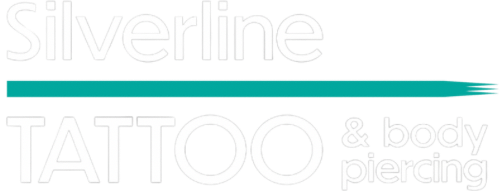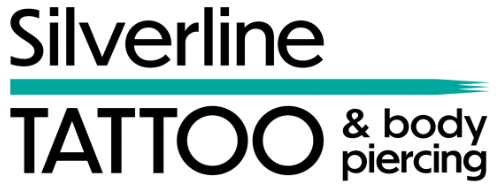Naval And Nipple Piercing Aftercare Instructions
Always wash your hands before you touch your piercing or the area around it.
Soak your piercing twice a day and wash it once a day in the shower, bath, or sink so that you are caring for your piercing at least three times a day. Clean all dry, crusted matter off the jewelry before you move it. This dry matter is composed of dried white blood cells which your body uses to fight bacteria. To remove these ‘crusties’, you may soak the jewelry in warm water before you move it. If you do not take the time to do so, the dried matter can scratch and/or re-open the piercing.
Wash your piercing in the shower using a mild soap. For soaps, we recommend Tattoo Goo Soap, Spectro gel, Neutrogena, Dove, Ivory, pHisoderm, or a mild face soap you are familiar with using. Lather the soap on the piercing area using clean hands. Turn the jewelry so that what was inside the piercing is now outside. Wash this part of the jewelry and turn it back. Rinse the piercing thoroughly using clean water in the same manner as it was washed. Make sure to rinse all the soap off the piercing.
DO NOT TAKE THE JEWELRY OUT OF THE PIERCING TO CLEAN IT—EVER!
Along with washing once a day, soak your piercing twice a day. To soak the piercing, use one cup (230ml) of warm water and ½ tsp of Sea Salt or Epsom Salts. This will make a saline solution to soak the piercing with and DO NOT use any more salt than prescribed. Do not use table salt, you SPECIFICALLY want non-iodized salt. Hold the cup and its solution to the area for at least 10 to 15 minutes, longer is not bad. This should remove all crusted matter on the jewelry and clean the piercing out.
After one month, clean your piercing every time you shower and soak it at least once a day for another month. DO NOT touch your jewelry or piercing again until the next time it is washed.
Things To Do
- Keep your new piercing clean and follow the instructions given.
- Do be careful with your new piercing. Bumps and bangs can do damage to the healing tissue and possibly offset the piercing or cause bumps.
- Take care to remove dry matter from the jewelry by soaking it before moving the jewelry.
- Check the balls on your piercing to ensure they are tight when you wash them.
- Eat healthy while trying to heal a piercing, even if you find it difficult to do so having received an oral piercing (tongue, lip, etc.).
Things Not To Do
- Do NOT use alcohol, peroxide, iodine, aloe vera, or Band-Aids. These products are too harsh for a fresh piercing. They can harm your healing skin cells and slow healing.
- Do NOT, touch your new piercing with dirty hands or allow someone to touch your piercing.
- Do NOT use alcohol, peroxide, iodine, aloe vera, or Band-Aids. These products are too harsh for a fresh piercing. They can harm your healing skin cells and slow healing.
- Do NOT, touch your new piercing with dirty hands or allow someone to touch your piercing.
- Do NOT use Polysporin or other ointments. If your piercing is not infected, these products will only hinder healing.
- Do NOT wear clothes that will not allow your piercing to “breathe”.
- Do NOT, allow oral contact with the piercing. Yes, that is right, mouths are dirty.
- Do NOT ever remove the jewelry unless you want to make the removal permanent! Even if it looks infected, call us first. If you think you have had the piercing long enough to take it in and out, call us before even thinking about doing so. (After years some piercings can close very quickly without the jewelry holding the piercing in place.)
- Do NOT have a piercing done if you are stressed out, ill, or on antibiotics. Your piercing could take longer to heal.
What to Expect from Your Healing Piercing
Sometimes a piercing may look infected but is not infected. This is an “inflammatory response”. These are small red, slightly swollen areas that occur around pierced areas occasionally during the healing process. There can also be a white discharge with slight itchiness and mild discomfort. These annoyances can all be part of the healing process and do not
necessarily mean your piercing is infected. Infection is always possible, but not typical. Bacteria are introduced by excessive handling, dirt, and/or sweat–just to mention some of the ways bacteria can get into a piercing.
Signs of Infection
The entire area is hot, sore, extremely itchy, and/or excreting greenish discharge. If you get an infection, the first thing to do
is to relax. Getting upset can only make things worse. Call us or come in, we can usually help. If not, we would be more than
happy to work with a physician to help make it better. This does not have to be the end of your piercing.
How Long Until My Piercing Is Healed?
The average healing time for most piercings is well over 4-6 months. Do not become discouraged. This does not mean that your piercing will act up the entire time, it just means be careful with it. It is recommended that professional piercers should be the only ones to handle any type of jewelry removal or change until the piercing is fully healed.
We highly recommend a check-up visit within 2-3 weeks after your piercing has been done or at any time you would like some advice. We would be happy to help you with any healing issues that may arise.

